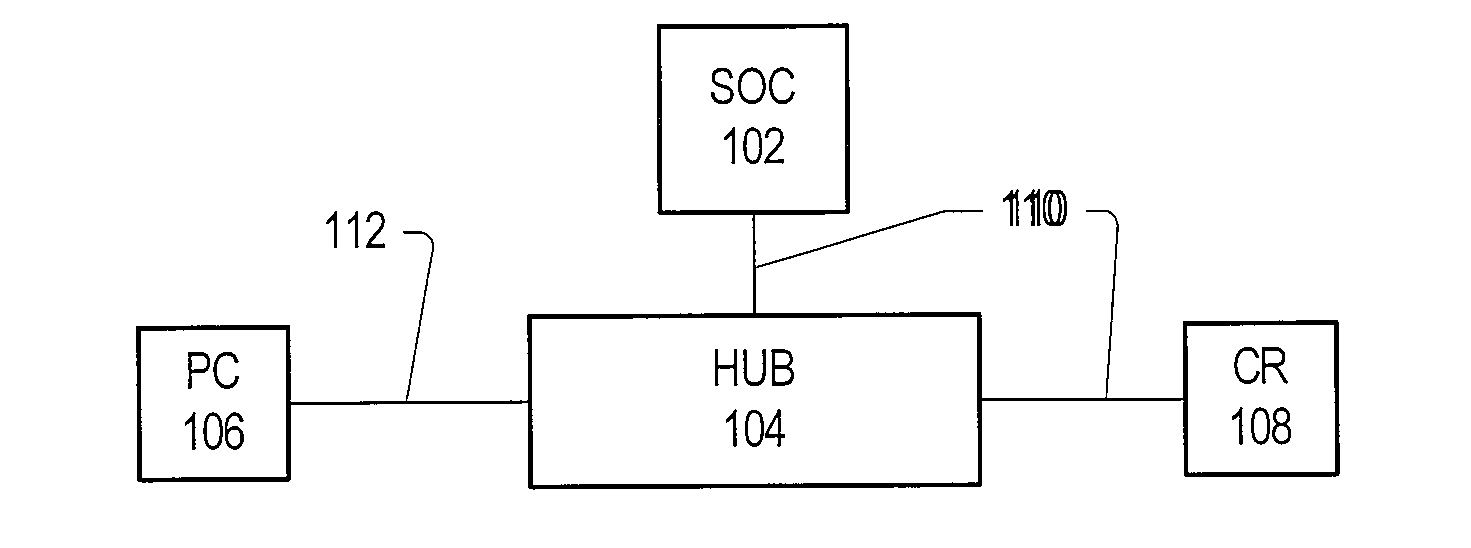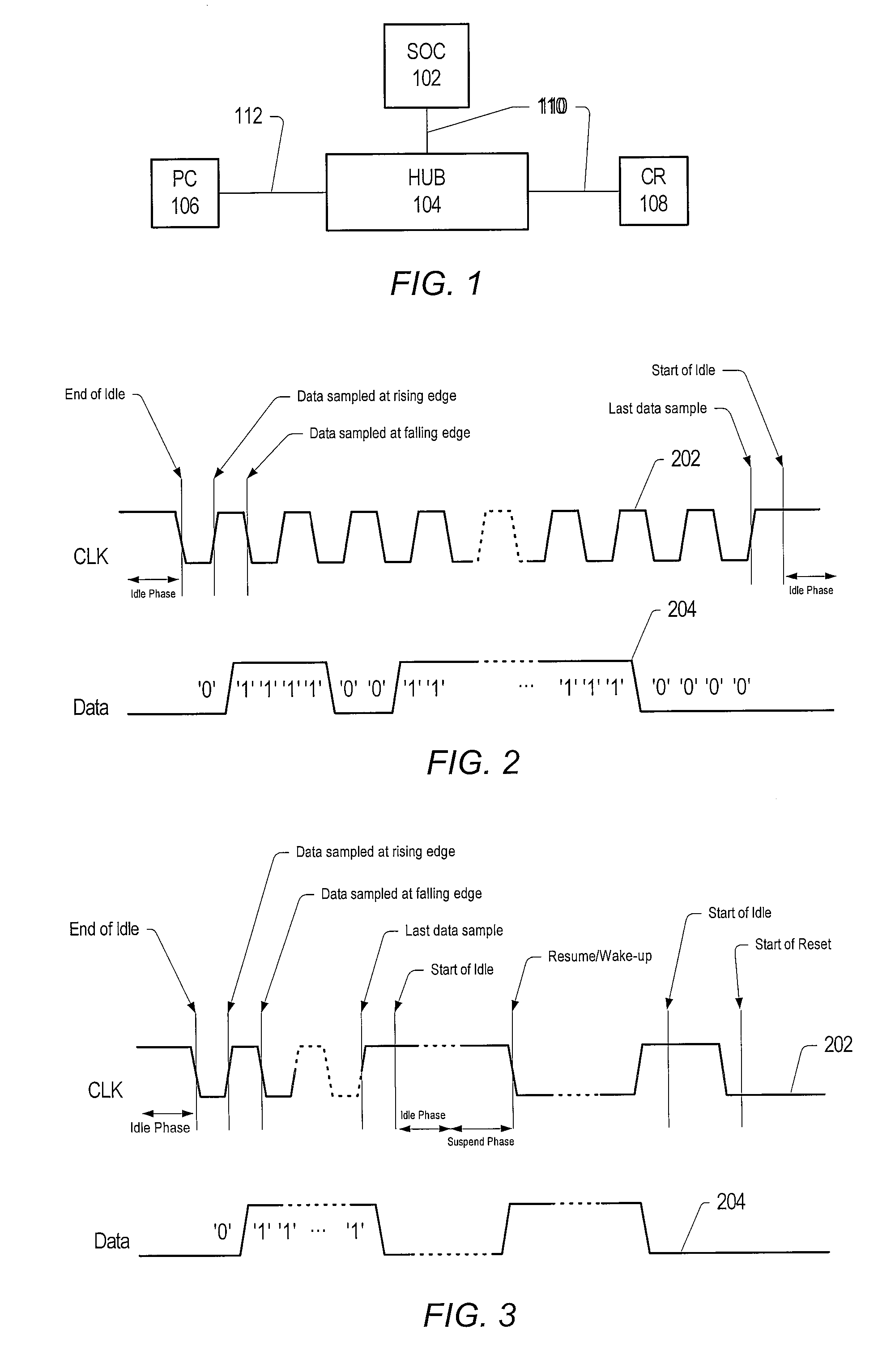Low power and low pin count bi-directional dual data rate device interconnect interface
- Summary
- Abstract
- Description
- Claims
- Application Information
AI Technical Summary
Benefits of technology
Problems solved by technology
Method used
Image
Examples
Embodiment Construction
[0031]In one set of embodiments, a 2-wire (or at least 2-wire) digital bus may be configured to interconnect USB devices and controllers without using a USB physical layer (PHY) or USB cable. One wire may be a bidirectional clock (CLK) line / signal and the other wire may be a bidirectional data line / signal. In certain embodiments, the clock signal may only be active during a data transfer, and data may be clocked on rising and falling edges of the clock, thereby implementing a double data rate (DDR) transfer protocol. The transmitting device may source the CLK signal simultaneously and synchronously with the data, while the receiving device may clock the data during transitions of the clock line. In one embodiment, the bus may comprise one or more double data rate (DDR) data lines, which may all be source synchronous with the CLK line. Voltage levels may be process / device specific. FIG. 1 illustrates a block diagram of an exemplary system in which a 2-wire bidirectional bimodal bus 1...
PUM
 Login to View More
Login to View More Abstract
Description
Claims
Application Information
 Login to View More
Login to View More - R&D
- Intellectual Property
- Life Sciences
- Materials
- Tech Scout
- Unparalleled Data Quality
- Higher Quality Content
- 60% Fewer Hallucinations
Browse by: Latest US Patents, China's latest patents, Technical Efficacy Thesaurus, Application Domain, Technology Topic, Popular Technical Reports.
© 2025 PatSnap. All rights reserved.Legal|Privacy policy|Modern Slavery Act Transparency Statement|Sitemap|About US| Contact US: help@patsnap.com


